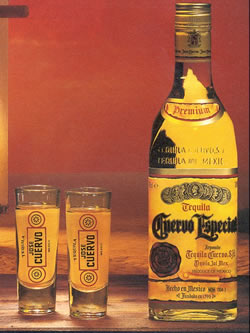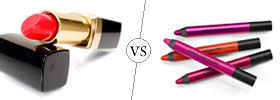Difference between Tequila and Mezcal
Key difference: Tequila and mescal are two different types of liquors. Mezcal, also known as mescal, is a distilled alcoholic beverage. It is made from any different forms of agave. Tequila is another type of liquor. It is a distilled spirit that is composed from the blue agave plant. Hence, it can also be said that it is a particular type of mescal.
 Alcoholic drinks serve a variety of purposes today. It is present at almost every event such as a party or a get-together. It can also be served as an ice breaker on a new date or as many people claim it help drown out sorrows and other worries. They have practically become a main part of our culture.
Alcoholic drinks serve a variety of purposes today. It is present at almost every event such as a party or a get-together. It can also be served as an ice breaker on a new date or as many people claim it help drown out sorrows and other worries. They have practically become a main part of our culture.
There are a variety of different alcoholic beverages that can be consumed including beer, wine, champagne, and distilled spirits, or hard liquors such as vodka, whiskey, gin, rum, scotch, etc. However, each drink differs in terms of flavor, appearance, process of making etc. Tequila and mescal are two different types of liquors.
Mezcal, also known as mescal, is a distilled alcoholic beverage. It is made from any different forms of agave. There are no actual laws regulating the production of mezcal, hence the product may differ depending on the distillery. Furthermore, most of the mezcal is produced by small time local distilleries without any official guidelines. Still, the process of producing mezcal remains the same overall, with changes only to minor details.
Mezcal has a unique, smoky flavor; mainly because the agave is often cooked in pits over hot rocks. This infuses the liquor with smokiness. Mezcal has a sweet and rich taste, especially as compared to tequila. Some of the producers have adopted a production processes similar to tequila. Hence, these mezcals taste quite similar to tequila.
The term ‘mezcal’ is derived from the Nahuatl ‘mexcalli’, ‘metl’ and ‘ixcall,’ which essentially means "oven-cooked agave." Mezcal distilleries are located all over Mexico, however most of the well known mescal comes from the state of Oaxaca. The mezcal from Oaxaca is the one that is generally exported to Japan and the United States. Mezcal can be 104 to 106 proof, however the ones that are exported, especially to the US, usually are 80 to 86 proof.
There are two main types of mezcals: 100% agave and mixto, which are atleast 80% agave. The rest is made up of other sugars. Mezcals are generally categorized into four categories:
Abacado (also called joven or blanco): clear, un-aged mezcal that results from the distillation process. It is often bottled immediately, but flavoring can be added.
Dorado (golden): Similar to abacado, an un-aged mezcal that results from the distillation process but with coloring agents. More commonly a mixed mezcal.
Reposado (also called madurado): aged in wood barrels for two to eleven months.
Añejo: aged in wood barrels for a minimum of twelve months. The best of this type are generally aged from eighteen months to three years, at times even four years.
Until recently, mezcal was not generally popular outside of Mexico. Even in the US, it was more of a novelty item, usually for frat boys. This was probably because of the ‘worm’ in the bottle. As the story goes, traditionally a worm was placed within the bottle as proof of the high alcohol content. Essentially it was supposed to prove that the alcohol content in the mezcal was high enough to preserve a worm.
However, many believe that the ‘worm’ was actually a marketing gimmick to help boost sales. The ‘worm’ is actually not even a worm, it is a larvae or one of two of the moths that infest the agave plants. The larva is actually edible and has no negative consequences. Many frat boys dared each other to eat the ‘worm.’ In some places, the larvae is deep fried and served as an accompaniment to the mezcal.
This has lead to the urban legend that cheap tequila is often bottled with a worm. Actually, tequila never comes with a worm in the bottle. Even, high quality mezcal does not actually come with a worm in the bottle. However, some mezcal producers take this a step further and bottle mezcal with a scorpion or a snake.
Tequila is another type of liquor. It is a distilled spirit that is composed from the blue agave plant. Hence, it can also be said that it is a particular type of mescal. The blue agave plant grows primarily around the city of Tequila, Mexico. Hence, most tequila distilleries are located in the surrounding area. According to Mexican Law, tequila can be produced only in the state of Jalisco and limited regions in the states of Guanajuato, Michoacán, Nayarit, and Tamaulipas. However, it can be shipped in large quantities to the United States of America to be bottled, and eventually sold.
 Tequila was first produced in the 15th century. It generally has 38–40% alcohol content, which is 76–80 proof. Some types of tequila may be produced with an alcoholic content as low as 31% (62 proof) or as high as 55% (110 proof). However, these are uncommon.
Tequila was first produced in the 15th century. It generally has 38–40% alcohol content, which is 76–80 proof. Some types of tequila may be produced with an alcoholic content as low as 31% (62 proof) or as high as 55% (110 proof). However, these are uncommon.
Under Mexican Law, only tequila which is 100% agave can be sold as tequila. Even so, as per American Law, tequila which is 51% agave can be commercially labeled as tequila. These types of tequila are usually called mixtos in Mexico.
According to Wikipedia, there are 5 different types of tequila:
- Blanco (white) or plata (silver): white spirit, un-aged and bottled or stored immediately after distillation, or aged less than two months in stainless steel or neutral oak barrels
- Joven (young) or oro (gold): usually a mixto (rarely 100% agave) with added coloring
- Reposado (rested): aged a minimum of two months, but less than a year in oak barrels of any size
- Añejo (aged or vintage): aged a minimum of one year, but less than three years in small oak barrels
- Extra Añejo (extra aged or ultra aged): aged a minimum of three years in oak barrels.
Tequila is often drunk neat in form of shots. This is why tequila has a bad reputation for causing blackouts and hangovers. However, many of the premium tequilas are now sipped neat, in order to taste the flavor and to enjoy the liquor. Tequila may also be used to create cocktails, the most famous of which is the Margarita.
Image Courtesy: ilcircolo.net, scottystarnes.wordpress.com









Add new comment